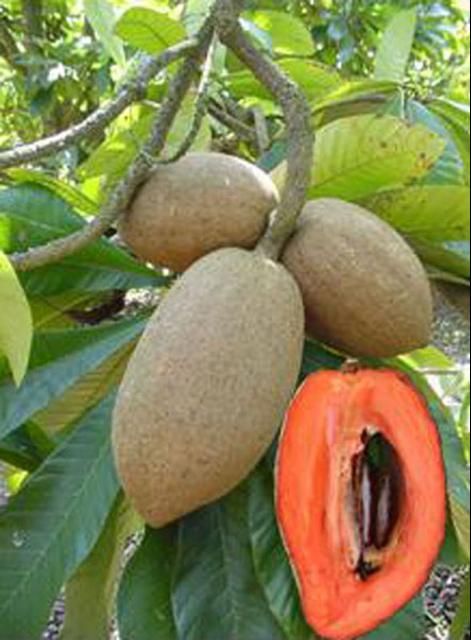Description
Mamey sapote is also known as mamey Colorado and is originally from the lowlands of Mexico and Central America. The fruit is highly appreciated by people from Caribbean and Central America. There are two main commercial varieties grown in Florida; 'Magaña' (2- to 4-lb-fruit, with elliptic shape and slightly pointed end) and 'Pantin' (smaller size, oval shape and 1- to 2-lbs). The fruit skin is rough and dark-brown, the flesh is orange to deep- red, sweet, creamy, and has a cherry-almond-like flavor. The fruit is high in vitamin A and it is considered a good source of potassium.

Credit: UF/IFAS

Credit: J. H. Crane, UF/IFAS
Packing for Shipment
Fruit must be harvested when completely mature. Before harvest, every fruit must be checked for the right stage of maturity. Make a small scratch in the skin using a sharp knife. The fruit is considered mature only if the exposed pulp is orange or red. If it is green, the fruit is immature and should be left on the tree until ripe. Fruit picked immature will fail to soften, their pulp will turn dark brown and will be inedible. Some growers brush and clean the skin to remove possible scales and trim the peduncle to improve fruit appearance. Application of a fruit wax reduces water loss and helps 'Magaña' mamey fruit to soften more uniformly during handling and shipping. However, it may hasten ripening. Application of 1-MCP (1-methylcyclopropene) with or without a wax coating delay ripening. Mamey fruit is usually packed in 25- or 50-lb boxes.
Supply
For the Magaña variety, heavy production is in April–May, and for Pantin it is in July–August, with lighter supply in March and September.
Postharvest Life
Mamey is considered a perishable fruit. Mature fruit can be stored in a cooler at no lower than 55°F with 85–95% relative humidity for several days before shipping to its final destination. It is also transported at 55°F. Storage at lower temperatures may result in off-flavors. When placed at room temperature, mamey fruit ripens in 3 to 5 days. Mamey fruit produce large amounts of ethylene (a natural plant hormone) and should be stored separated from ethylene-sensitive commodities.
Preparation
Mamey may be eaten fresh directly in slices by cutting it lengthwise and removing the seed. It can also be eaten in preparations with other ingredients to make milkshakes or ice cream. It is also excellent for use in jellies, pastes and conserves. Mamey flambé is very popular among chefs in south Florida.